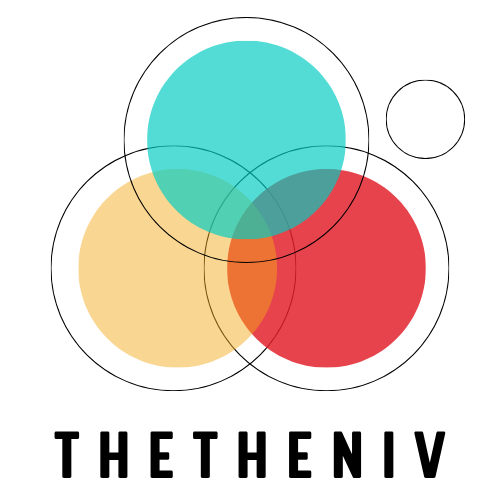Duyurular
Yönetmek in 2025 looks different from even a few years ago — are you ready to ask how that affects your team and daily work?
You’ll find practical guidance based on recent data and real examples, not one-size-fits-all rules. A 2024 Leader to Leader piece found about one-third of U.S. managers had no training before or after promotion. That gap matters.
Strong people leadership links to better wellbeing, engagement, and retention, per CIPD. Harvard Business Publishing and Gallup highlight emotional intelligence, clear feedback, and frequent check-ins as high-value skills.
This article will help you adapt strategies to your context, measure outcomes, and iterate. Expect clear ideas on people-first practices, feedback cadence, goal alignment, and using limited time and information wisely.
Use these ideas as guidance to test, learn, and refine what fits your organization and employees. You’ll walk away with simple steps and questions to try with your team.
Duyurular
Introduction: why 2025 demands sharper Management tips and people-first leadership
2025 asks managers to pair human-centered judgment with simple systems that guide daily work.
As a U.S. manager, you face shifting employee expectations, more distributed work, and pressure to align outcomes to strategy. Harvard Business Publishing highlights emotional and social intelligence as top leadership skills. CIPD links strong people management to performance and retention.
Context and relevance for U.S. leaders
Many promoted professionals lack formal training, per Leader to Leader (2024). That gap means you must adopt accessible, evidence-based approaches that support your team and employees.
Duyurular
What’s new in 2025
- Proven skills matter: empathy, conflict handling, and clear communication improve employee engagement.
- Set simple rhythms that respect zaman and cut needless meetings.
- Frame decisions with the right bilgi and keep project coordination light.
How to use this list
Pick one area, define a small metric, and make sure you review progress in a set window. Ask better questions, invite two-way communication, and connect individual work to clear goals. Treat each item as a menu, not a mandate, so you can adapt, measure, and iterate in a practical way.
People management gets real: centering well-being, trust, and growth
Real people-focused leadership blends empathy, clear agreements, and simple measurement.
Emotional and social intelligence rise
Harvard Business Publishing’s 2023 Global Leadership Development Study found emotional and social intelligence, empathy, and conflict management are top skills for modern leaders.
Nearly 1,300 L&D and HR professionals flagged these abilities as high value. You can practice them in short, daily moments.
Creating psychological safety
Build trust by following up on agreements and asking how employees feel about workload and clarity.
Normalize respectful conflict. Teach members how to disagree, run quick debriefs, and keep the work environment safe for ideas.
Why it matters
CIPD links strong people management to better wellbeing, engagement, performance, and retention.
Track simple indicators—participation, safety-survey items, and voluntary turnover—and adapt your approach if results stall.
- Practice active listening and highlight individual strengths to help team growth.
- Include brief input windows so employees feel heard and reduce rework.
- Use pulse checks and act on one change at a time to measure impact.
From annual reviews to always-on coaching: making continuous feedback work
Small, regular conversations beat sporadic evaluations for keeping projects on track and people motivated.
Set a predictable one-on-one cadence—weekly or biweekly—so you and each employee can take time to review strategy, unblock work, and spot early signs of burnout.
Keep status in shared tools so your live zaman focuses on coaching, problem solving, and growth. When the meeting is not a status dump, the takım gets meaningful help.
Set a modern cadence: effective one-on-ones for strategy, growth, and burnout prevention
Use targeted questions to prompt two-way communication, for example: “Where did we get stuck this week and why?” or “What would make this process 20% easier?”
Deliver feedback quickly and specifically, linking behaviors to outcomes and co-creating next steps so an employee can act with confidence.
Evidence-based feedback: specificity, two-way loops, and Gallup motivation data
Gallup finds employees are about 3.6 times more likely to be motivated when they get daily rather than annual feedback. Use that as a guide to increase frequency where it helps.
- Predictable meetings: weekly or biweekly one-on-ones that focus on strategy and burnout prevention.
- Prioritize live time: capture project status elsewhere so your conversations target coaching and risks.
- Short follow-ups: two-minute notes or voice memos between sessions to keep momentum without adding extra calendar burden.
Track lightweight indicators—day-to-day morale notes, follow-through on agreed tasks, and early risk flags—and adjust cadence if meetings slide into status-only updates.
Invite upward feedback every session and treat praise as data: call out what worked and why so the takım repeats behaviors that drive better performans.
Data-driven decisions and transparent goals: aligning work with outcomes
When you make goals visible, decisions become simpler and work gains obvious meaning.

OKRs for clarity and collaboration
Use OKRs to translate strategy into action. Set a few clear Objectives and measurable Key Results so each member sees how their work supports company outcomes at every level.
Co-create goals with employees to boost ownership. Publish goals where the team can view progress and trade-offs.
Measure what matters
Pick a small set of KPIs and a simple dashboard that shows the signals you actually use to steer decisions.
Establish a regular review rhythm — a short weekly check and a monthly review can be enough to spot trends and react.
Balance numbers with nuance
Share the information behind targets: assumptions, constraints, and dependencies. That context helps employees flag risks early.
Combine quantitative measures with qualitative input from the team. Numbers show what happened; conversations explain why and guide next steps.
- Keep artifacts lightweight: one-page plans and brief weekly reviews.
- Calibrate ambition to time and capacity; adjust mid-cycle when facts change.
- Communicate progress simply and often to protect outcomes and success.
Time, focus, and meetings in 2025: small shifts that compound performance
Small shifts in how you use your day add up to large gains in focus and output.
Start by running a one- to two-week time log to see where your hours actually go. Use the Covey matrix to separate urgent from important and cut last-minute scrambles.
Prioritize with intent
Use a short daily plan: one critical task and two supporting tasks. Emin olmak you protect blocks for deep work and keep status updates out of those windows.
Protect attention
Rubinstein, Meyer, and Evans found multitasking reduces output. Single-task on complex work and batch simple items like approvals or email.
- Turn off nonessential notifications and set app limits to improve digital wellbeing.
- Share a clear agenda and start/end meetings on time; skip ones that can be async.
- Reserve meeting-free windows for focused work and track whether throughput improves.
Review your calendar weekly, remove low-value entries, and measure the effect. Small changes in scheduling are a simple way to protect focus and raise team performance.
Management tips for empowering teams: delegation, autonomy, and skill-building
When you hand off the right task to the right person, both the project and the team win.
Start by selecting work that matches strengths or offers a safe stretch. Explain why the task matters to the project so members see the outcome, not just the work.
Clarify outcomes and guardrails. Define scope, decision rights, and when the employee should escalate. Clear boundaries let people act with autonomy and reduce back-and-forth.
A practical delegation playbook
- Select tasks that build skills or use existing strengths; name the expected result and deadline.
- Agree on milestones and light check-ins—monitor risk, not minute steps, to show trust.
- Supply context, examples of quality, and access to experts so work moves quickly and well.
- Ask the employee to summarize the plan to confirm understanding and avoid rework.
- Use a simple rubric for quality and timing so feedback and decisions are fast.
- Recognize results publicly and review improvements privately to grow confidence and support.
Finally, track the time you recover from delegation and where you reinvest it—strategy, coaching, or removing blockers. Treat this as guidance, not a guarantee: adapt the approach to your people, measure outcomes, and refine the way you hand off work.
Manager growth is continuous: training, peer learning, and servant leadership
Growing as a leader is a steady habit, not a one-time event.
Close the training gap with a mix of internal courses, external programs, mentors, and peer roundtables that match your level and organization.
Practical learning structures
Build a quarterly learning plan tied to your career goals and your team’s needs.
Block regular time for deliberate practice, reflection, and applying new information on real work.
Low-ego leadership and peer learning
Adopt a low-ego stance: learn from others on your team and separate personal identity from outcomes.
Use structured peer sessions to swap playbooks on sticky issues. Bring scenarios, leave with one experiment and a follow-up date.
- Ask focused questions in 1:1s and retros to sharpen your leader toolkit.
- Share short learning artifacts—summaries, frameworks, or checklists—so employees see the value of continuous improvement.
- Reassess your growth plan twice a year to stay aligned with workplace change and avoid burnout.
See a practical model of servant leadership to strengthen a low-ego approach that supports team performance and sustainable career growth.
Çözüm
Try one focused experiment this month to learn how small changes affect employee engagement and outcomes.
Choose one or two ideas to pilot, set clear goals and guardrails, and agree how you’ll assess performance and trust signals over time. Keep communication simple and transparent so employees understand the why behind changes and how they link to company priorities.
Match ambition to capacity to protect balance and time. Document what worked and what didn’t, and share your decisions so employees feel included and the work environment stays predictable.
If you need deeper expertise, consult HR partners, coaches, or external specialists. Maintain a short review cadence to make timely decisions, celebrate progress, and refine your approach.
Strong management is contextual. Adapt these tips to your team, measure results, and iterate with care so your teams and employees feel supported and can do their best work.



